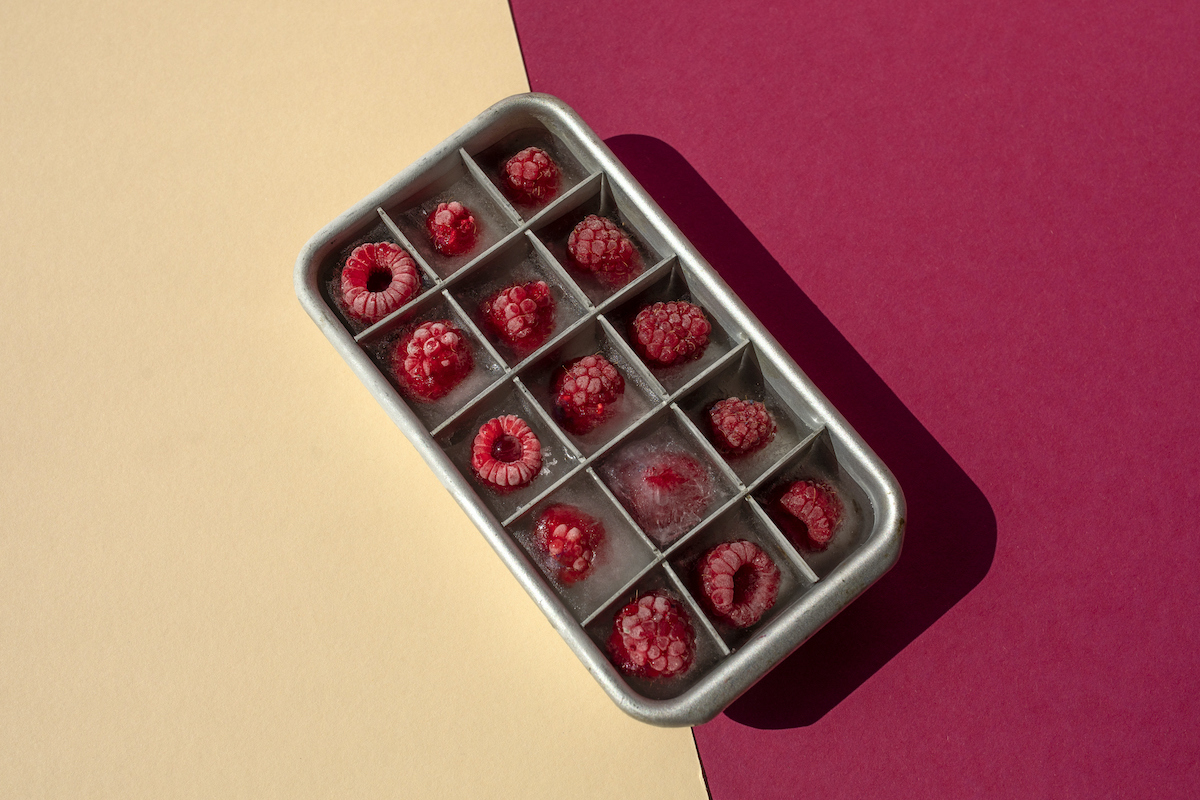When I was 18, I was let loose on a local magazine’s website — specifically, the food section — and told to follow my curiosity. I took that as editorial permission to be nosy. So naturally, one of the first things I did was call up my favorite local restaurants and ask if I could poke around in their kitchens. I wanted to look inside their refrigerators and freezers. I wanted to take pictures. And, to my mild surprise, they said yes.
I loved that story for a lot of reasons. It was my first-ever photo essay, and it introduced me to a bunch of fun chefs in a matter of weeks. But more than anything, it showed me something I hadn’t realized: I was using my ice cube tray all wrong.
Not fundamentally wrong — I was making ice with it, don’t worry. I was young, not feral. But when I opened those chef freezers, I realized I hadn’t even scratched the surface of what an ice cube tray could do.
The one that really floored me? Caramelized onions.
I found them in the freezer of a now-shuttered New Southern restaurant, tucked beside vacuum-sealed bags of shrimp. The chef — who had the calm, efficient energy of someone who’d already done breakfast service and was halfway through their second coffee — saw me eyeing the tray of deep golden cubes and grinned.
“Oh, those? Caramelized onions,” he said, as if it were the most obvious thing in the world. “You take all that time to make them — why waste them?”
That week, they were going on a surf-and-turf version of shrimp and grits: steak tips, seared shrimp, a lake of cheesy grits and, right on top, a tangle of sweet-savory onions. But the base prep stayed the same. He’d make a huge batch, freeze the leftovers in the tray, then pop them out one by one as needed. It was brilliant.
We need your help to stay independent
That was the moment it clicked for me: The humble ice cube tray wasn’t just a freezer accessory. It was a tool of preservation, of intention — a secret little system that made restaurant life smoother and more efficient. And here’s the best part: You don’t need to be running a kitchen to use it that way. Freezing small portions of high-impact ingredients is one of the easiest, sneakiest ways for home cooks to borrow a bit of that cheffy magic. You’ll feel wildly prepared the next time you throw together dinner — and as a bonus, you won’t have to hover over a hot stove in the middle of July to get there.
Sauces
If there’s one thing that will make you feel smug in the best possible way, it’s having sauce cubes at the ready. Pesto is the classic, of course — especially when basil’s going wild in the garden — but don’t stop there. Leftover curry pastes, chipotles in adobo, gochujang-honey glazes, romesco, tamarind chutney—all of them freeze beautifully. The key is to think like a restaurant: Make a batch when you’re in the mood (or just have the produce), freeze what you don’t need and thank yourself later. Suddenly, Tuesday night rice bowls feel like a planned dish instead of a cry for help.
Want more great food writing and recipes? Sign up for Salon’s free food newsletter, The Bite.
That said, not every sauce is a freezer star. Creamy emulsions — like mayonnaise-based dressings or cheese sauces — can separate and turn grainy. And anything delicate with a raw egg (like hollandaise) is best enjoyed fresh. For everything else, just portion into your tray, cover with a bit of parchment or plastic wrap if you’re feeling fancy, and once frozen, pop the cubes into a zip-top bag for long-term storage. Voilà: your own little drawer of secret flavor grenades.
Flavor enhancers
This is where the tray really shines. Think: the spoonfuls of things you always wish you had on hand but rarely want to make from scratch. Caramelized onions. Browned butter. Fresh tomato paste. Mirepoix that you’ve cooked down into a jammy little soffritto. You can even freeze stock or broth with herbs already added — rosemary, thyme, a peppercorn or two — and drop it straight into the pot when it’s time to cook. It’s the culinary version of setting your clothes out the night before, except more delicious.
Coffee
Let’s be honest: In the summer, iced coffee is not just a beverage — it’s a coping mechanism. But watery iced coffee? No thank you. Enter the tray. Freeze your leftover brewed coffee into cubes, then drop them into your next glass for a cold brew that gets stronger, not sadder. This move isn’t just a lazy girl hack—it’s a favorite trick of several coffee pros I know, and these people are very particular about their coffee. You can even freeze sweetened condensed milk, oat milk, or your preferred splash of something creamy to add a tiny indulgence to your caffeine ritual. Add a little cinnamon or vanilla if you’re feeling it. It’s not espresso culture. It’s freezer culture.
All these years later, I still think about those golden cubes in the back of that restaurant freezer. Not just because they were smart — but because they felt like a kind of quiet hospitality, even in their frozen state. A gesture toward ease. Toward future you. That’s what a good ice cube tray is, in the end: a tiny engine of thoughtfulness. One square at a time.
Read more
about this topic


